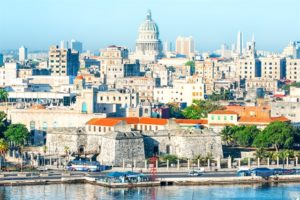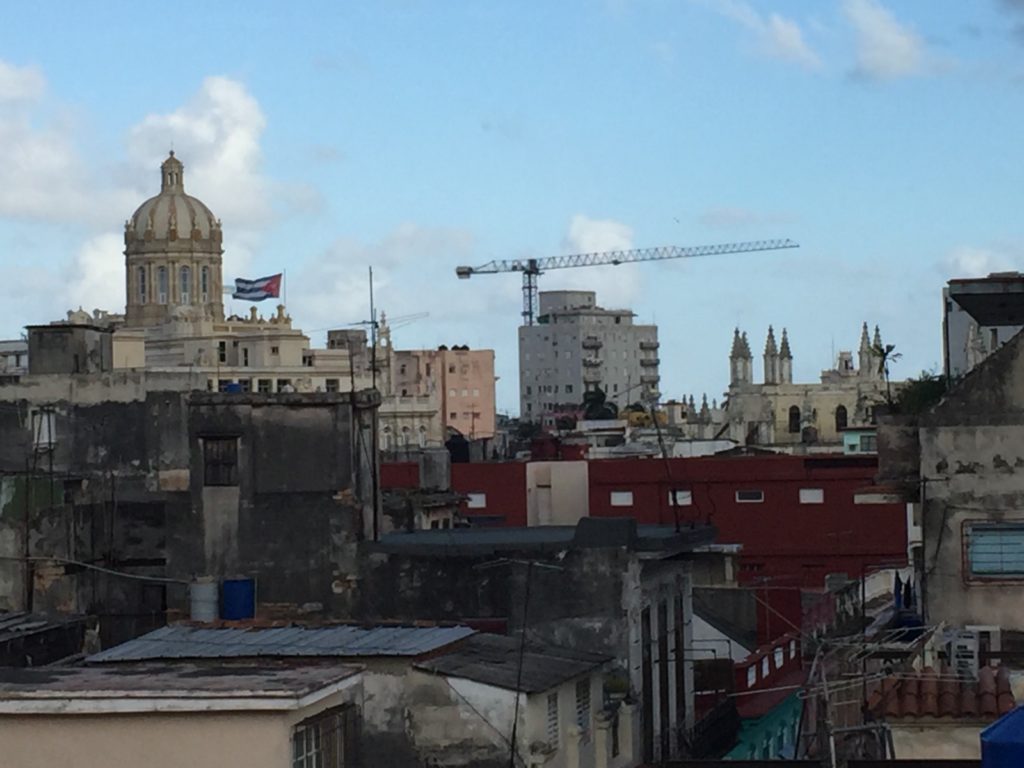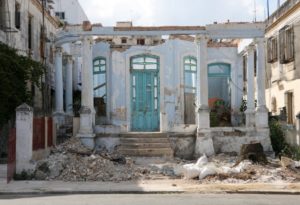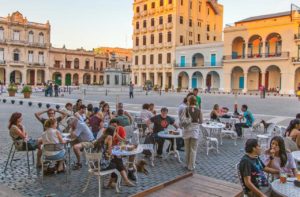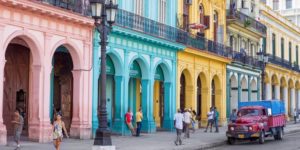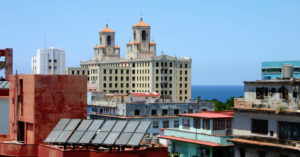 (2019) “AÑO NUEVO, VIDA NUEVA”.. MIS RECUERDOS.
(2019) “AÑO NUEVO, VIDA NUEVA”.. MIS RECUERDOS.
El fin de un año es siempre para el ser humano ocasión de balance y recuento; momento propicio para repasar éxitos y fracasos, y contrastar lo conseguido con lo que no se alcanzó. A las 12 de la noche del 31 de diciembre se cierra una etapa que da paso enseguida a otra que se abre con nuevas metas, que a veces vienen de antes como esos siempre anhelados e invariablemente incumplidos propósitos de abandonar el cigarrillo, visitar a la vieja tía enferma o rebajar el peso corporal. Se dice: «Año nuevo; vida nueva».
.. Hay en esto del fin de año costumbres que se mantienen y nuevos usos que pugnan por perpetuarse.
Cuando yo era niño, el lechón, que era como le llamábamos, o, en su defecto, el pernilito, se asaba en la panadería. Llegado el 24, la familia sacaba del cuarto de los trastos la tártara o plancha, guardada desde el año anterior, que el panadero metería en el horno y que, ya asado el animal o su pata, oficiaba como una especie de parihuela para trasladarlo a la casa. La cosa se ponía fea cuando el reloj empezaba a correr, llegaban las ocho o las nueve de la noche, la ansiedad comenzaba a hacer estragos y el lechón no regresaba de la panadería, aunque desde temprano en la mañana se había solicitado el servicio. Y es que debía esperar su turno. De aquella época vienen a la memoria del escribidor los nombres de algunas panaderías, todas en el reparto Lawton: El Buen Gusto, en Concepción esquina a Armas; San Francisco, en la calle del mismo nombre entre Delicias y Diez de Octubre; La Princesa, en 16 esquina a Concepción y El Bombero, en Porvenir esquina a B, que es, creo, el único de estos cuatro establecimientos que permanece abierto.
Tanto si se asaba en la panadería o en la casa, el proceso tenía sus complejidades. Se mataba el animal el día antes y se recogía la sangre para las morcillas. Se le echaba agua hirviendo, y se frotaba con un ladrillo para sacarle la piel y blanquearlo. Se afeitaba y enjuagaba. Se abría y se extraían las vísceras. Se enjuagaba entonces por dentro y se colgaba para que escurriera. Se adobaba por la noche y al día siguiente se escurría ese adobo y se ponía el cerdo en la parrilla. Si se había decidido asarlo en la casa una opción era de la abrir en la tierra un hueco de medio metro cuadrado, abastecerlo de carbón o leña suficiente, y colocar la parrilla sobre cuatro estacas. El asado se alejaba de la candela a medida que el animal se cocinaba. Mientras el puerco se asaba, las vísceras fritas, que era lo primero que se comía, acompañaban el ron o la cerveza. Todo eso era parte del folclor.
El cubo.
Una tradición que ha resistido todas las épocas es la del cubo. Cuando el reloj va a marcar las 12 del día 31, tiene ya el cubano preparado detrás de la puerta un cubo lleno de agua que lanza a la calle con la duodécima campanada, con la esperanza de que se lleve todo lo malo y que, por bueno que fuera el año que se va, sea mejor el que llega. Están las 12 uvas y la copa de champán o de sidra, una tradición que ha vuelto. Pero nunca antes que el cubo que se lanza a la calle con alegría y esperanza.
Hemos tenido fines de año mejores que otros. El 31 de diciembre de 1898 cesó en Cuba la soberanía española. La nueva situación provocó sentimientos encontrados en el cubano de a pie. Unos lloraban, otros reían, escribía el cronista Federico Villoch. Era una conmoción nerviosa difícil de contener. No se luchó durante tantos años para que al final fuera la bandera norteamericana la que tremolara en la Plaza de Armas y en el Morro. Pero la salida de España, luego de 400 años de dominación, ocasionaba alivio y alegría.
Sesenta y un años después, el agua del cubo del fin de año de 1958 arrastraba a Batista y a su camarilla. Y a todo un régimen social. Por primera vez en la historia la frase “Año nuevo” creíamos se hacía realidad..
 (2019) “NEW YEAR, NEW LIFE” .. MY MEMORIES.
(2019) “NEW YEAR, NEW LIFE” .. MY MEMORIES.
The end of a year is always for the human being occasion of balance and recount; propitious time to review successes and failures, and contrast what has been achieved with what was not achieved. At 12 o’clock on the night of December 31 a stage is closed that gives way immediately to another that opens with new goals, which sometimes come from before as those always desired and invariably unfulfilled purposes of abandoning the cigarette, visiting the old sick aunt or lower body weight. It says: «New year; new life”.
.. There is in this end of the year customs that are maintained and new uses that struggle to perpetuate.
When I was a child, the piglet, which was what we called it, or, failing that, the little pernilito, was roasted in the bakery. On the 24th, the family would take out the tartar or griddle from the tack room, stored since the previous year, that the baker would put in the oven and, once the animal or its leg was roasted, it would officiate as a kind of stretcher to move it to home. The thing got ugly when the clock started to run, it was eight or nine o’clock at night, the anxiety began to wreak havoc and the piglet did not return from the bakery, although from early in the morning the service had been requested. And he had to wait his turn. From that time come to the memory of the writer the names of some bakeries, all in the cast Lawton: The Good Taste, in Concepcion corner Armas; San Francisco, on the street of the same name between Delicias and Diez de Octubre; The Princess, in 16 corner to Concepción and El Bombero, in Porvenir corner B, which is, I think, the only one of these four establishments that remains open.
Whether it was roasting in the bakery or in the house, the process had its complexities. The animal was killed the day before and the blood was collected for the blood sausages. He boiled water, and rubbed with a brick to remove the skin and whiten it. He shaved and rinsed. It opened and the viscera were extracted. It was rinsed then inside and hung to drain. It was marinated at night and the next day that marinade was drained and the pig was put on the grill. If it had been decided to roast it in the house, one option was to open a half square meter hole in the ground, supply it with coal or sufficient wood, and place the grill on four stakes. The roast moved away from the candle as the animal cooked. While the pork was roasting, the fried guts, which was the first thing that was eaten, accompanied the rum or the beer. All that was part of folklore.
The Bucket. (El Cubo).
A tradition that has resisted all epochs is that of the cube. When the clock is going to mark 12 o’clock on the 31st, the Cuban has already prepared a bucket full of water that he throws into the street with the twelfth stroke, hoping that everything bad will be taken away and that, for Good that it was the year that goes away, it is better the one that arrives. There are 12 grapes and a glass of champagne or cider, a tradition that has returned. But never before the cube that launches into the street with joy and hope.
We have had better ends of the year than others. On December 31, 1898, Spanish sovereignty ceased in Cuba. The new situation provoked mixed feelings in the Cuban on foot. Some cried, others laughed, wrote the chronicler Federico Villoch. It was a nervous shock difficult to contain. It was not fought for so many years so that in the end it was the American flag that trembled in the Plaza de Armas and in El Morro. But the departure from Spain, after 400 years of domination, caused relief and joy.
Sixty-one years later, the bucket water at the end of the year of 1958 dragged Batista and his clique. And to a whole social regime. For the first time in history the phrase “New Year” we believed was coming true ..
Agencies/ Ciro Bianchi/Internet Photos/ Extractos/ Arnoldo Varona/ www.TheCubanHistory.com
THE CUBAN HISTORY, HOLLYWOOD.










